Festivals - FCAD 2024 : A Conversation Around We Grown Now with Director Minhal Baig
By Mulder, Deauville, Hotel Barriere The Royal, 08 september 2024
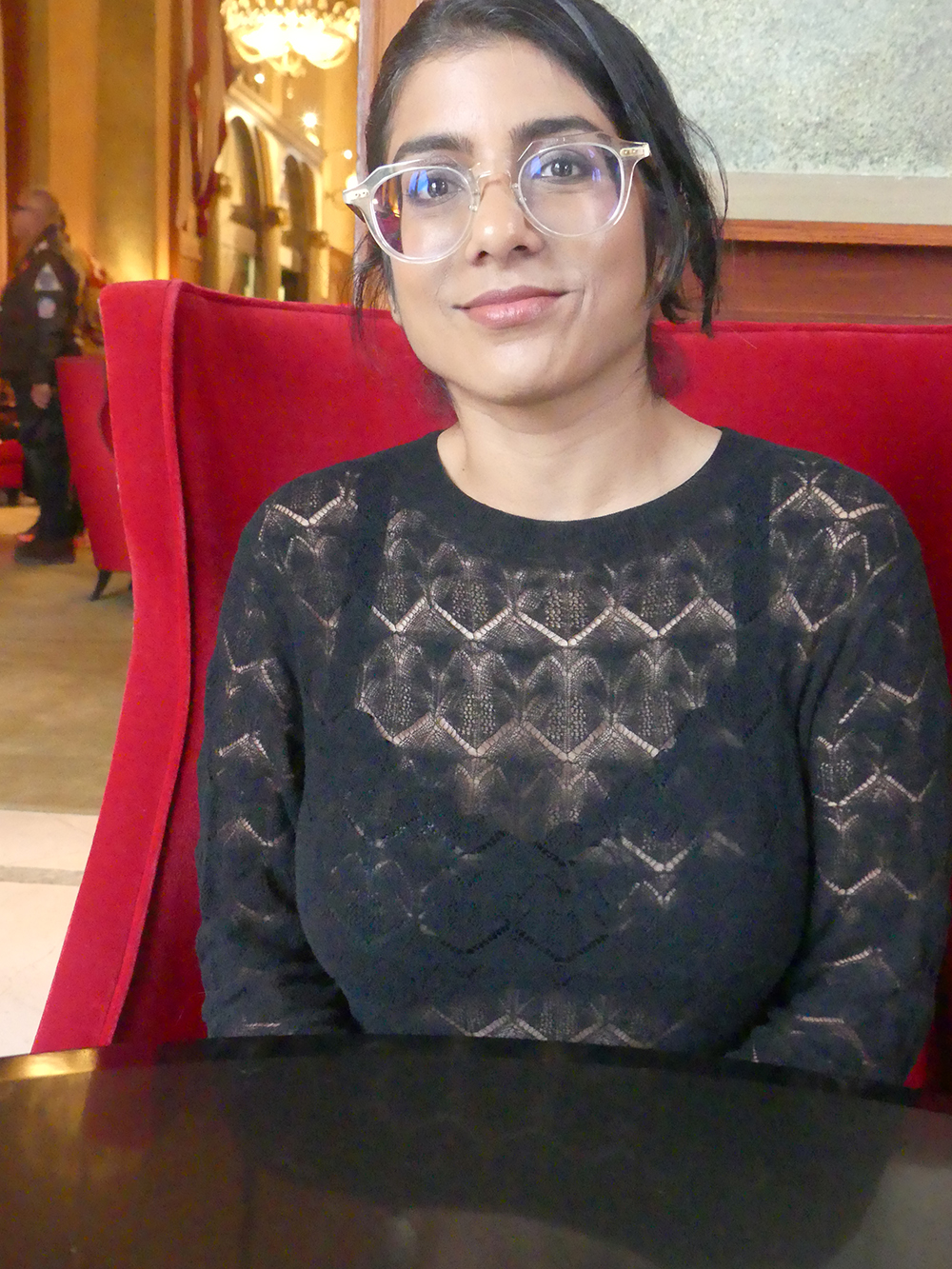
At the 2024 Deauville American Film Festival, We Grown Now, directed by Minhal Baig, left a significant impression with its heartfelt coming-of-age story set in the early 1990s at Chicago’s Cabrini-Green housing projects. The film follows Malik and Eric, two young boys growing up in a rapidly changing environment, as they navigate the challenges of childhood and systemic inequality. Baig’s delicate storytelling beautifully captures both the innocence of their friendship and the harsh realities of the socio-economic struggles faced by marginalized communities. The film’s ability to blend moments of human connection with broader social issues resonated strongly with the festival audience.
One of the film’s standout qualities is its authentic representation of Cabrini-Green, where Baig not only highlights the adversity faced by its residents but also the pride, beauty, and vibrant community spirit that thrived there. During the post-screening Q&A, Baig expressed her commitment to showing a balanced portrayal of the neighborhood, emphasizing both the struggles and the strength of its people. The performances of young actors Blake Cameron James and Gian Knight Ramirez, who play Malik and Eric, further anchored the film, delivering emotional depth and authenticity to their portrayal of childhood friendship. The combination of nostalgic visuals and timely themes of gentrification and displacement made We Grown Now a standout entry in this year’s official competition.
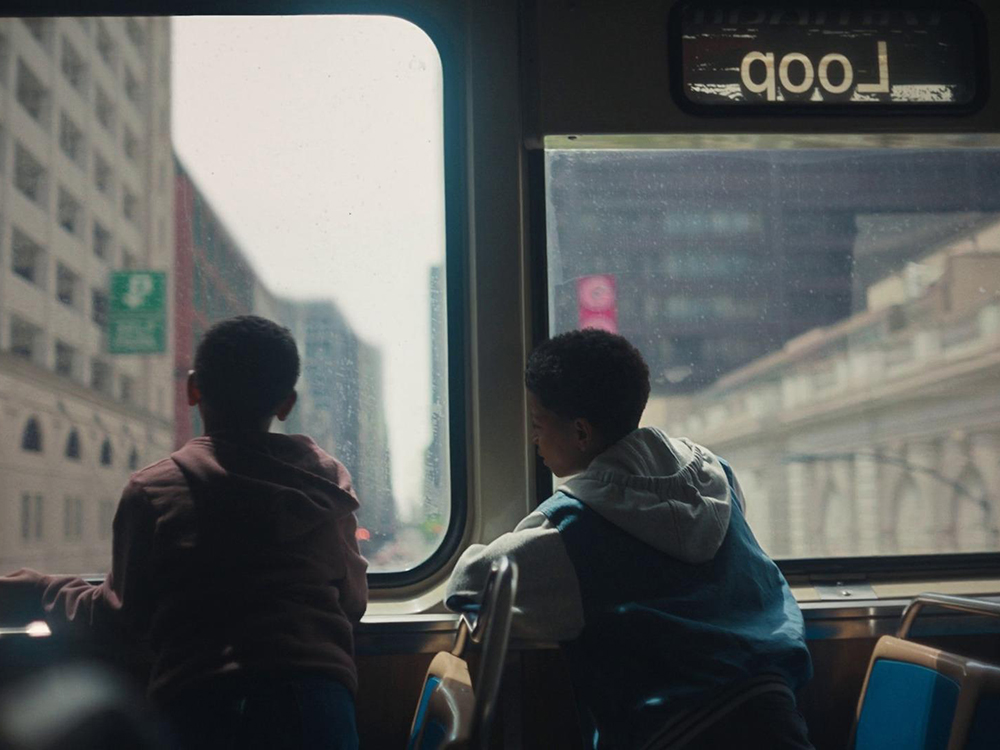
We had the opportunity to interview the director Minhal Baig.
Q: We Grow Now explores some very personal and emotional themes. What inspired you to tell this particular story ?
Minhal Baig: That's a good question. I had moved back to Chicago as an adult after my father had passed away, and I was interested in exploring my relationship to home now that my father is no longer there. The place has changed, but I wanted to explore it through the perspective of a community and take on a very different process than I had with my previous film. You know, the previous film was very autobiographical, and with this movie, I really wanted to explore something new through this community that I had been connected to by two friends who are also from Chicago. These journalists had spent a lot of time documenting the lives of people who live in the projects, and I just started interviewing people. That process took several years, and over the course of that time, I realized there was so much in their stories that felt like it needed to be in a movie. What was exciting about their stories, too, was that I was really surprised by what they focused on—they focused on everyday domestic life, not just the sensationalized parts, not just the tragedy and difficulties of living there, but the joys, the beauty, the friendships, the families—everything that I feel I hadn't seen before in a movie.
Q: Can you talk about the casting process? How did you find the right actors to bring these characters to life ?
Minhal Baig: The casting process took a very long time—it took a year and a half. We had seen hundreds of children, and all of it was done over Zoom. The hard part was casting two kids at the same time because we really needed to feel that they both had chemistry. We found Malik, the actor who played Malik, first—Blake was so charismatic and extroverted, we felt like he was absolutely Malik. Then we found Gian, who plays Eric, later. He really needed to embody a kid who has an old soul—he’s quieter and more introverted. Gian is actually from Chicago. We had the two kids come together, we started rehearsals, and we realized they had chemistry. These were definitely the kids who were going to be on screen.

Q: What were some of the biggest challenges you faced while making this film ?
Minhal Baig: Every part. Every part of this movie. Everything from the creative—you know, it's a challenging movie because it's a period film from the perspective of these kids, and it’s heavier subject matter. We're touching on themes of systemic racism and the challenges of living in public housing, and we're doing it through a very particular lens. Creatively, that was difficult, and then there was the financial part. We needed enough money to really be able to recreate this place. The place you see in the movie—that was built in stages. We built the apartments you see. And then, the last part that's really hard about this movie is getting it out there and having the audience see it, because it's a smaller film, and it’s becoming harder for small films to get theatrical releases. We were lucky to have Sony Classics come on board and release the movie. But every part of this movie was challenging. Thankfully, we had the support of Sony and Participant, who really believed in the movie and what we were trying to do.
Q: What message or feeling do you hope audiences take away from watching the film ?
Minhal Baig: This is an easy one. What I really hope is that the audience comes away from this movie understanding that a home is a place, and a place is its people. It’s the people that make it significant—that's why it's home. I think that’s something anyone can relate to.
Q: How did you balance the personal and cultural aspects of the story while keeping it relatable to a broad audience ?
Minhal Baig: You know, I think that the more specific the story was, the more I felt like people could relate to it, even if they hadn't grown up in public housing. The smallest memories, details, and experiences—I was very surprised to learn that a larger audience could relate to them. Even small things, like the Danish tin cookies with sewing supplies—I grew up with that, and I didn’t grow up in public housing. Or going to the Art Institute—those are experiences that people understand the feeling of, even if it’s not the exact experience. That’s what we hoped to achieve with the movie, to show that everyday people lived in the high-rises, people like myself, like others. Yes, they have dreams, families, and friends, and that’s what I wanted to convey in the film.

Q: Were there any specific films or filmmakers that influenced your approach to We Grow Now ?
Minhal Baig: Crooklyn by Spike Lee was a big reference for us. Also, Killer of Sheep by Charles Burnett. We were also inspired by the child acting in The Florida Project by Sean Baker. Those were some of the movies that inspired us, but we were also influenced a lot by photography—specifically street photography of Cabrini-Green in the late '80s and early '90s.
Q: How has your personal experience shaped the narrative of this film ?
Minhal Baig: I believe that with every movie I do, I try to approach it with the goal of telling an emotional truth. I’m trying to share an experience because, most of all, I think a movie is an experience more than anything else. I'm hoping to take the audience on a journey. With this particular movie, I wanted to take them to a place they’ve never been, one they couldn't possibly have gone to, and make them feel like they wanted to be there—that they understand what it’s like to be there. I hope they feel sadness when Malik leaves because they come to understand this place as home, too. My approach to storytelling is that it needs to make you feel something. If you don't feel something, then maybe you’re doing something wrong. That’s my sensibility when it comes to filmmaking, and I think it worked well on screen for the audience.
Q: The film has a very intimate visual style. Can you talk about the collaboration with your cinematographer and your vision for the film's look ?
Minhal Baig: Pat Scola is the cinematographer, and he and I worked very closely to recreate a place that doesn’t exist anymore but also do it through a specific perspective. We really focused on what things would look and feel like from a child’s perspective, even down to the details like the angle and the level—at eye level with the children. Pat brought a lot of that to the movie. I also pushed him to try and push the film formally because I think there are expectations for what a film set in the projects will look like, and we needed to destroy those expectations and try to do something new. We did that in every aspect when it came to composition, movement, and color, too. There’s a lot of warmth in this place, which you wouldn’t normally expect. Pat has experience working with children, which was one of the biggest reasons I wanted to work with him, because he understands that what's central to this movie is the kids.
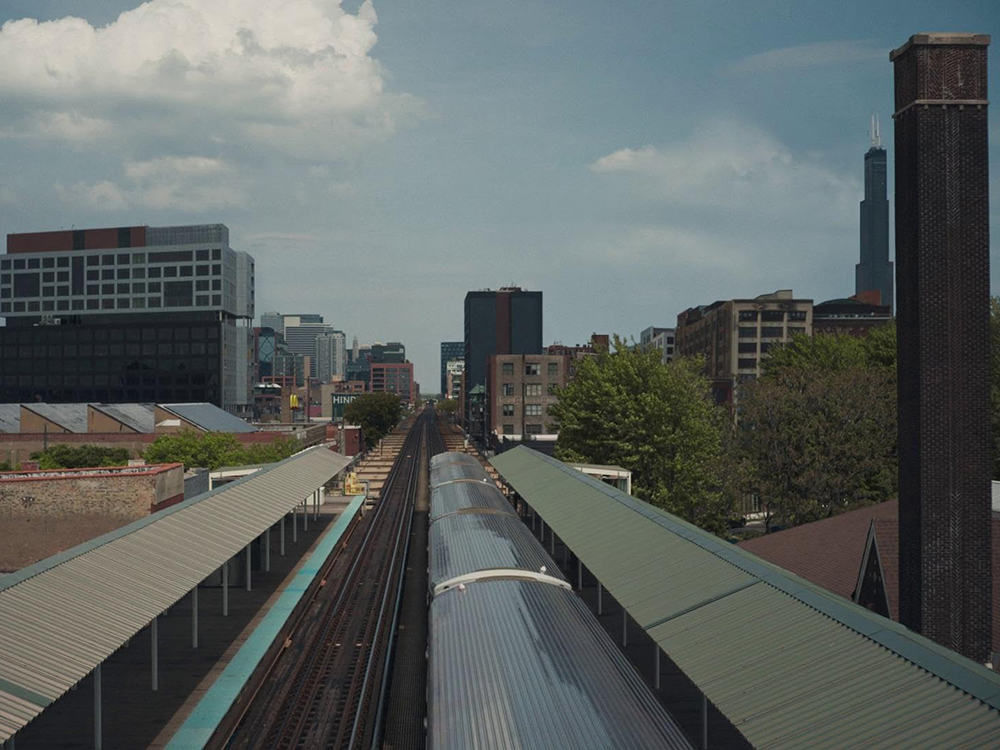
Q: Can you share a bit about the writing process? Did the story evolve significantly from script to screen ?
Minhal Baig: The script evolved and came together out of conversations and interviews I had with former residents. That process took several years, but even during filming, I was still changing things up until the day of. For the most part, though, what I did was listen to the children when they were talking and speaking the lines. I was really listening for moments that didn’t feel honest, and when it didn’t feel honest, I changed it. Sometimes they would say something differently than I had written it, just by mistake, and I kept it in the movie because I liked it. I really liked that they were saying it as a child would.
Q: In what ways do you think this film speaks to the current moment, socially or culturally ?
Minhal Baig: When we made this film, we shot it in 2022, and it had been 30 years since Santino Terrance was shot and killed. What’s happening now is that we have a greater awareness of violence and a deeper understanding of systemic inequity and racism. But what’s harder to accept right now is that we’re still witnessing a lot of that today. The challenge is the gap between what we know and what’s being done about it. Unfortunately, I think the film is only becoming more relevant in our culture because these are ongoing issues—public housing, systemic racism, and police brutality—things we’re still dealing with today.

Q: The title We Grow Now feels very evocative. How did you decide on that title, and what does it signify to you ?
Minhal Baig: It was very important that the title of the movie be something the kids could actually say, and it felt like We Grow Now was something they would say in their own words. The other reason this title is so meaningful is because one of the people I interviewed, MC Tree, made an album titled We Grow Now. When I met with him, I asked him if I could use the title for the movie, and he gave us his blessing. So, the title holds a special place in my heart because it pays tribute to him and his lived experiences, and it clearly feels like it’s from the perspective of the kids in the movie.
Q: How do you handle the responsibility of representing diverse voices and stories in your work ?
Minhal Baig: It was something I took very seriously. I’m not from Cabrini-Green, so it was important for me to approach everything with curiosity and not assume anything. Every conversation I entered, I tried to understand their lives and lived experiences, without any assumptions or expectations. I was constantly surprised because I remained open to what they were saying and sharing with me. I didn’t experience hostility when I was interviewing people because they were just curious about why anyone was interested. The reality is that I’m a filmmaker, not a journalist, and I’m trying to present one particular story—a slice of life. I’m not trying to tell the whole story because I couldn’t possibly do that in one movie. I think the people I interviewed respected that. What kept me up at night was knowing that all these people had shared their stories with me, their time, and their resources. The movie really had to honor them, and that was a challenge for me as a filmmaker.

Q: What advice would you give to young filmmakers who want to tell deeply personal stories like you have with this film ?
Minhal Baig: I have one piece of advice that I’ve shared with my students: make a film, write a story, that changes your life. Do it because you feel passionate about it, because every day you feel called to do it. It should mean something to you, because if it doesn’t mean something to you, it won’t mean anything to other people. So, choose stories that transform you.
Q: What’s next for you after We Grow Now? Are there other projects in development that you’re excited about ?
Minhal Baig: I’ve written the script for my next movie, and I’m hoping to cast it soon, so my fingers are crossed. But as these things take time, I don’t divulge too many details because everything is subject to change. I’m really excited for the next film because I’m exploring an adult’s perspective. My past two films have been from the perspective of a teenager, and We Grow Now is from the perspective of these kids. I’m excited to tell a story from the lens of thirty-somethings—people like my age.
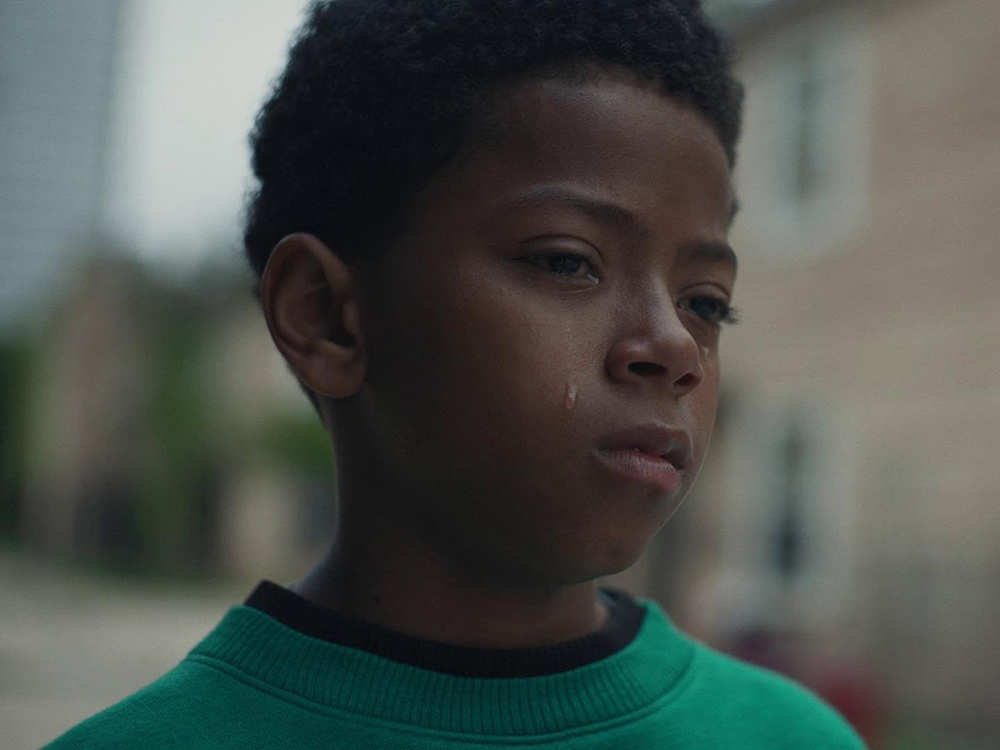
Synopsis:
Chicago, 1992. Malik and Eric, 9 years old, are two inseparable friends. Curious and imaginative, they roam the city to escape the banality of school life and the difficulties of growing up in public housing. But at an age when they're just learning to cope with life, their unbreakable bond is called into question when a tragedy shakes their community.
We grown now
Written and directed by Minhal Baig
Produced by Joe Pirro & Minhal Baig
Starring Blake Cameron James, Gian Knight Ramirez, S. Epatha Merkerson, Lil Rei Howery, Jurnee Smollett
Music: Jay Wadley
Director of photography: Pat Scola
Editing: Stephanie Filo
Production companies: Participant, Symbolic Exchange, Stage 6 Films
Distributed by Sony Pictures Classics, Stage 6 Films (United States)
Release date: April 19, 2024 (United States)
Running time: 93 minutes
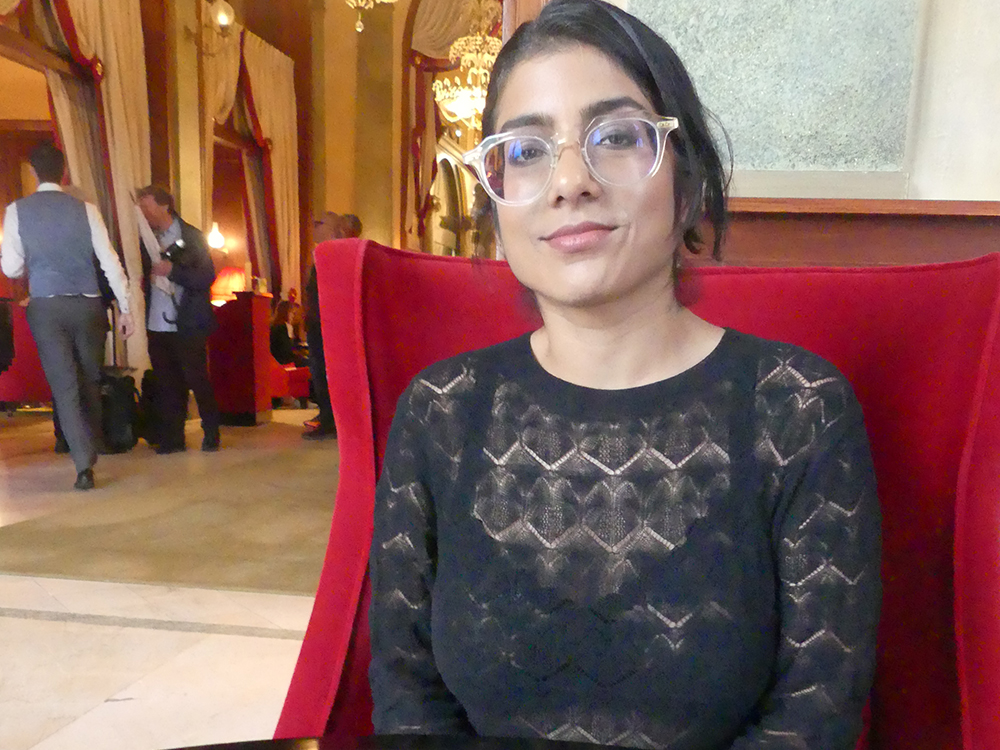
Photos and video : Boris Colletier / Mulderville
We would like to thank Minhal Baig for taking the time to answer our questions

